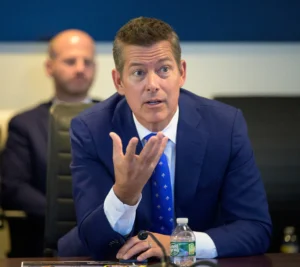The report notes that all types of fraud in the industry are on the rise.
A recent report from the Transportation Intermediaries Association (TIA) reveals a significant increase in the prevalence and costs of fraud in the sector. Titled “State of Fraud in the Industry 2024,” the report notes that all types of fraud in the industry are on the rise, forcing brokerage firms to allocate more resources to address this issue.
Anne Reinke, president and CEO of the TIA, emphasizes the seriousness of the situation, especially given the lack of support from government and law enforcement agencies. Reinke stresses that fraud not only impacts companies but also has repercussions for consumers and the economy as a whole.

Types of fraud in the transportation sector
The TIA report identifies five main types of fraud threatening the transportation brokerage industry:
- Cargo theft: electronics, solar panels, and household goods are the most affected loads, with this type of theft increasingly on the rise.
- Financial fraud: this category includes illegal brokerage scams.
- Identity theft: this occurs through deception directed at truck drivers and affects both individuals and companies.
- Internal/employee theft: involves fraudulent actions from within companies.
- Data/information theft: includes cyberattacks that compromise sensitive information.
According to the report, the most commonly reported type of fraud by respondents was broker scams (43%), followed by email impersonation (17%) and identity theft (11%).

Costs and consequences of fraud
The TIA report revealed that the average cost of fraud among surveyed companies exceeds $400,000, equivalent to approximately $41,000 per load. This financial burden is reflected in the supply chain and ultimately impacts consumers, who face increased prices for products due to these losses. California stands out as the main hotspot for fraud in the U.S., accounting for nearly half of the reported cases, followed by Texas and Illinois.
In addition to losses, fraud in the transportation sector has led companies to make significant investments in preventative measures, including the adoption of new technologies, staff training, and fraud insurance. However, these investments are affecting profit margins, which have been significantly reduced due to these additional costs.
On the legislative front, Representative David G. Valadao, a Republican from California, has introduced the “Safeguarding our Supply Chains Act,” which has the support of 14 bipartisan co-sponsors, highlighting widespread concern on the issue. Furthermore, regulations from the Federal Motor Carrier Safety Administration (FMCSA) regarding broker transparency, expected in October, are seen as a necessary response to these concerns.

Halloween activities for truck drivers: take the fun on the road
To celebrate this holiday safely while keeping the fun alive, we’ve put together a list of activities truck drivers can do to embrace the spirit

Secretary Duffy unveils new measures to strengthen trucking safety and compliance
In a press conference, Duffy pledged federal effort to eliminate fraud and improve trucking safety standards. On the morning of October 31, U.S. Secretary of

Rain and Early Snowfall: Weather Alert Issued for U.S. Highways This Weekend
Rain and early snowfall are prompting a weather alert for U.S. highways this weekend, with heavy storms expected across the South and early-season snow developing over the Rockies and Northern Plains.

Truck classification: a guide to the world of road transport
Understanding the vehicles we share the road with allows us to better appreciate the work and responsibility of those behind the wheel. Let’s talk truck

The highly anticipated Tesla Semi gears up for its official arrival in 2026
Following the release of Tesla’s third-quarter 2025 financial results, the company confirmed that the Tesla Semi is getting closer to its official debut. One of

Road Safety During Halloween: A Key Guide for Professional Drivers in the U.S.
Road safety during Halloween is a priority for professional drivers in the United States, especially with increased pedestrian activity, evening events, and changing weather conditions. This article outlines the risks and best practices for driving safely during this holiday period.
